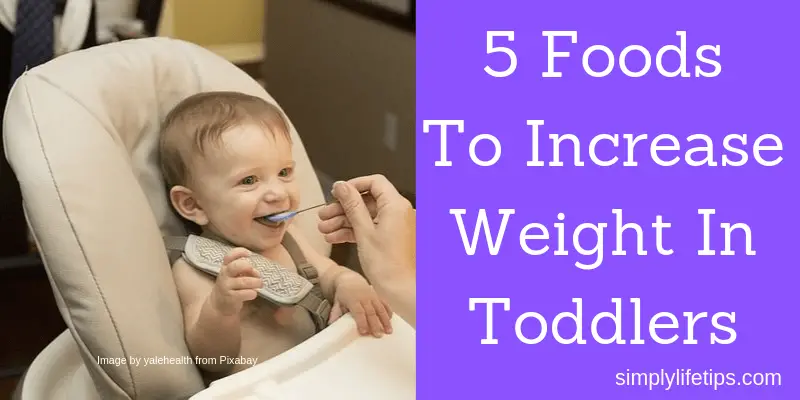Do you know what is ADHD? ADHD (Attention-deficit/hyperactivity disorder) is one of the most common neurodevelopmental disorders of childhood. ADHD is a chronic condition including attention difficulty, hyperactivity and impulsiveness. Even though you may not know much about ADHD, you might have seen children with ADHD. This article is based on the video of Erin Shane Felder Gonzalez, a psychologist in the pro clinic that’s part of Seattle Children’s Hospital outpatient psychiatry. She describes ADHD and how it is characterized by differences in how the brain works and how experts decide on a diagnosis by looking at symptoms and their effects on a child.
What is ADHD?
So ADHD is a neurodevelopmental disorder. The neuro part refers to the fact that it’s based in the brain. And I’ll talk in a couple of minutes about the types of brain differences we see in people with ADHD. The developmental part means that it’s with you starting when you’re very young and it tends to stay with you in some capacity over time even though the way the symptoms show up may change or they may get less noticeable or more noticeable over time. So if you go and bring your child for an evaluation for ADHD there are five things that we’re going to be looking for.
5 Criteria For Diagnosis of ADHD
- Symptoms
- Inattentive symptoms
- Hyperactive-impulsive symptoms
- Multiple settings
- Impairment
- Long-lasting
- Rule out “mimics”
The first thing that we’re going to be looking for are the symptoms of ADHD and there are two different clusters of symptoms for ADHD.
Two different clusters of symptoms for ADHD
Inattentive symptoms
The first cluster is the inattentive symptoms. These are things like getting distracted easily, having trouble following through on instructions or being disorganized and losing track of things.
Hyperactive-impulsive symptoms
The second cluster of symptoms is hyperactive-impulsive symptoms. These are things like having a really high energy level almost being driven by a motor or not thinking through before you do things. So blurting out, interrupting or maybe doing things that are risky without thinking about the consequences.
Diagnosis of ADHD
In order to have a diagnosis of ADHD, we’re gonna look at whether your child has symptoms in one category or both categories. You only need to have symptoms in one category to be diagnosed. But you may be saying as was talking about those symptoms those sounds like things that every child has and really most adults have. And you’re right. We all have some of these symptoms to some degree. So when we’re evaluating your child what we’re looking for is whether your child has these symptoms to a higher degree than most other children their age and has a large variety of the symptoms as well. So if your child just has the inattentive symptoms, we would call that ADHD predominantly inattentive subtype.
If they have just the hyperactive-impulsive symptoms that’s kind of unusual to have only those symptoms although it does happen in very young children, we call that ADHD predominantly hyperactive-impulsive subtype. The most common in children is to have both clusters of symptoms and we would call that ADHD combined type.
First Criteria – Level
So the first criteria is we want to know are the symptoms there to a level that just exceeds the typical development.
Second Criteria – Multiple Settings
The second thing we’re going to look for is whether the symptoms are consistent in different settings. So if your child only seems to have trouble when they’re in the classroom, it doesn’t have trouble with attention in any other setting, we want to look to maybe other causes of what’s getting in the way at school.
We want to see that symptoms are present in multiple settings and that would include at home with you going through their daily routines in the classroom, that’s very common, that we would see classroom behaviours that are different and also maybe learning differences. We would also look at social situations and whether your child might struggle to pay attention and follow along with the group in different social settings. We would also maybe look at extracurricular activities, different groups or classes that your child takes or what they look like when they’re they’re doing a group activity. And then we also look at any other settings where your child spends time it could be an after-school care program, could be with extended family members, or babysitters.
Third Criteria – Impairment
The third criteria we’re going to look at is whether the symptoms are causing a significant difficulty so impairment. So if your child has these symptoms but they’re not having any difficulty getting through their daily life, it’s not causing a problem we wouldn’t call that ADHD.
Fourth Criteria – Long Lasting
The fourth thing is that we want to see that the symptoms were present consistently over time and that’s where the developmental part of ADHD comes in. ADHD is something that’s with you essentially since birth. Sometimes it doesn’t show up until kids are a little bit older. For a few different reasons one being that all young kids are pretty hyper and distractible and it’s harder to diagnose at a young age. But even if your child is a little bit older, even a teenager or even an adult coming in for diagnosis we would want to put together some of the histories to see if there were signs of these symptoms when they were younger even if they weren’t too problematic yet.
Fifth Criteria – Rule Out ‘Mimics’
The fifth criteria we want to look at is whether or not there’s another explanation for the symptoms other than ADHD. So we’d want to look at whether your child has gone through any major transitions lately, changes, stresses that might affect their behavior or their ability to focus. We’d want to look at other types of mental health concerns like whether anxiety might be part of the picture for them or their mood or any other type of concern that would make it harder for them to focus. We might also look at medical conditions that could contribute to things like thyroid, things like sleep. A sleep disorder could make a child look like they have pretty serious attention problems. And we might ask that your doctor do a really thorough evaluation to make sure there’s nothing medical that might be contributing.
ADHD – Neuro part of the neurodevelopmental disorder
So going back to the neuro part of the neurodevelopmental disorder we do know that individuals with ADHD have differences in the brain that we can see in terms of imaging studies, so functional FF MRI studies. We see that there are differences in how two different chemicals are processed in the brain and those are norepinephrine and dopamine. These are neurotransmitters that help neurons in the brain send messages between each other.
Dopamine Regulation
You may have heard of dopamine before. It’s considered to be the pleasure chemical and it’s what gives us a sense of interest, reward and motivation, and we know for individuals with ADHD getting motivated and staying interested are some of the central difficulties. And that’s because if you have ADHD dopamine is not being processed and regulated in the brain in quite the same way that it is for other people. So kids with ADHD may not get as much of a dopamine reaction from daily tasks and so they’re gonna find some things more boring than other kids and that’s gonna lead them to get distracted and have trouble finishing the task.
We also know that it’s harder for kids to get really excited about things that are mundane day-to-day but they can still get really excited and even hyper-focus on things that are interesting to them. Video games being a really classic example. So your child may overfocus on certain things because that’s where they’re getting a real sense of reward and dopamine.
Frontal Lobe Development
The other area where we see differences in dopamine in the brain is in the frontal lobe. So the frontal lobe of your brain is where executive functions are based. You can think of it as the executive like the boss of your entire brain that your frontal lobe helps you with planning ahead, making decisions, getting yourself organized, and keeping track of information while you’re working on something. And we see that the development of the frontal lobe for children with ADHD has a bit of a delay about a 30% delay in what we call myelination and that’s a process that helps with the advanced development of those neurons.
So we want you to know that if your child is having a lot of symptoms of ADHD first of all it’s important to get an evaluation just. So we can be sure it actually is ADHD that’s causing the difficulty and we can help come up with a good treatment plan. And if it’s something else that’s contributing we can help steer you in the right direction as well. But second of all if your child is having these symptoms it often looks like they’re intentionally just not caring about their schoolwork, being lazy, or acting on purpose when really there is something different about how they’re processing information in the brain and how they respond to information
Credits: YouTube Watch the video
Final Thoughts
Hope that you found the above useful and also you could learn many things about ADHD. Talk from the experts is always valuable. Although we may not understand the medical terms, we get an overall idea of the symptoms and other details about ADHD.
Thank you for the visit. Hope you enjoyed your reading.
If you think this post will impact your life as well as others’ lives, don’t forget to share it.
Leave your thoughts and suggestions in the comment box below.

Mathukutty P. V. is the founder of Simply Life Tips. He is a Blogger, Content Writer, Influencer, and YouTuber. He is passionate about learning new skills. He is the Director of PokketCFO.
He lives with the notion of “SIMPLE LIVING, CREATIVE THINKING”. He Believes – “Sharing is caring.” and “Learning never ends.”



